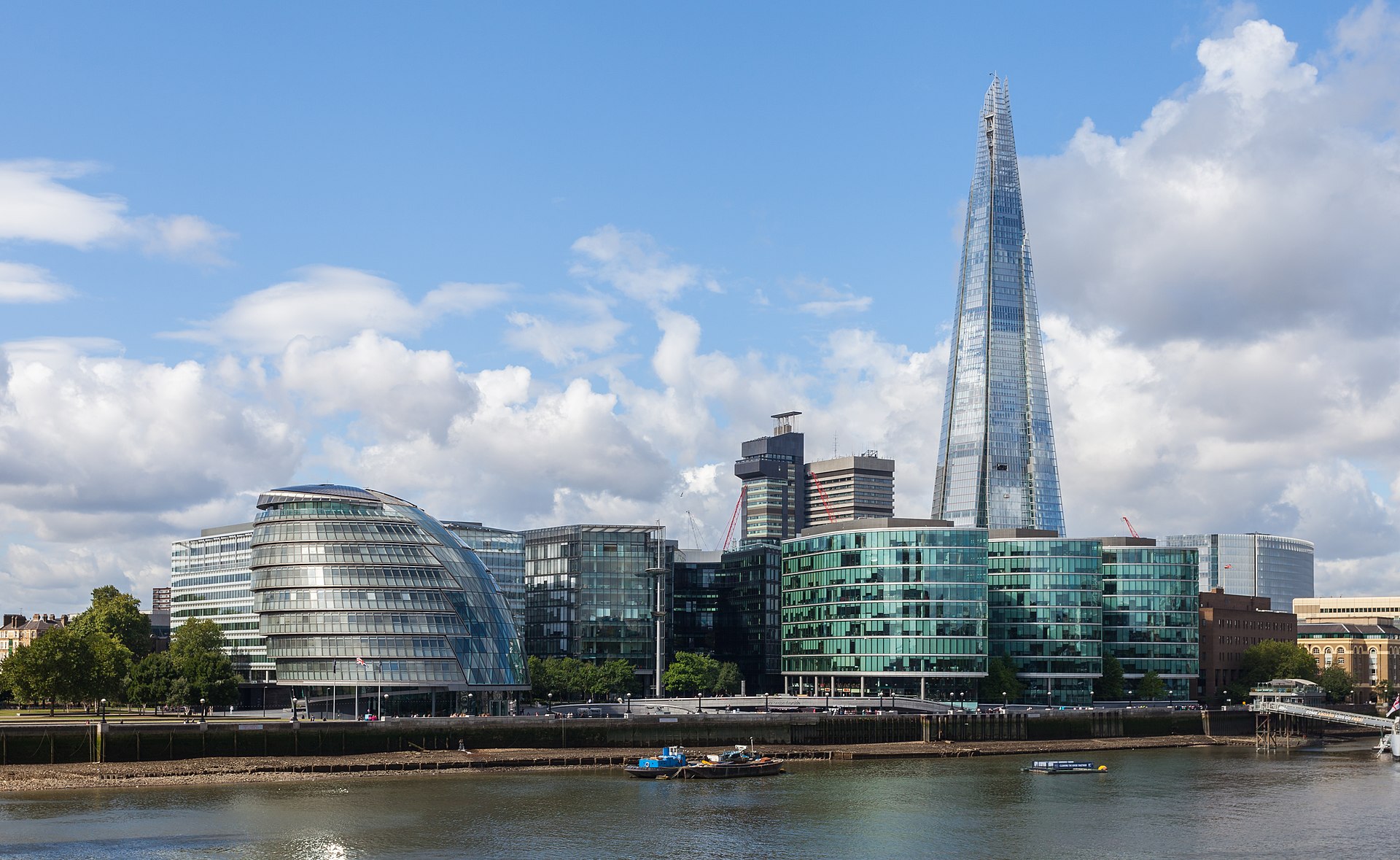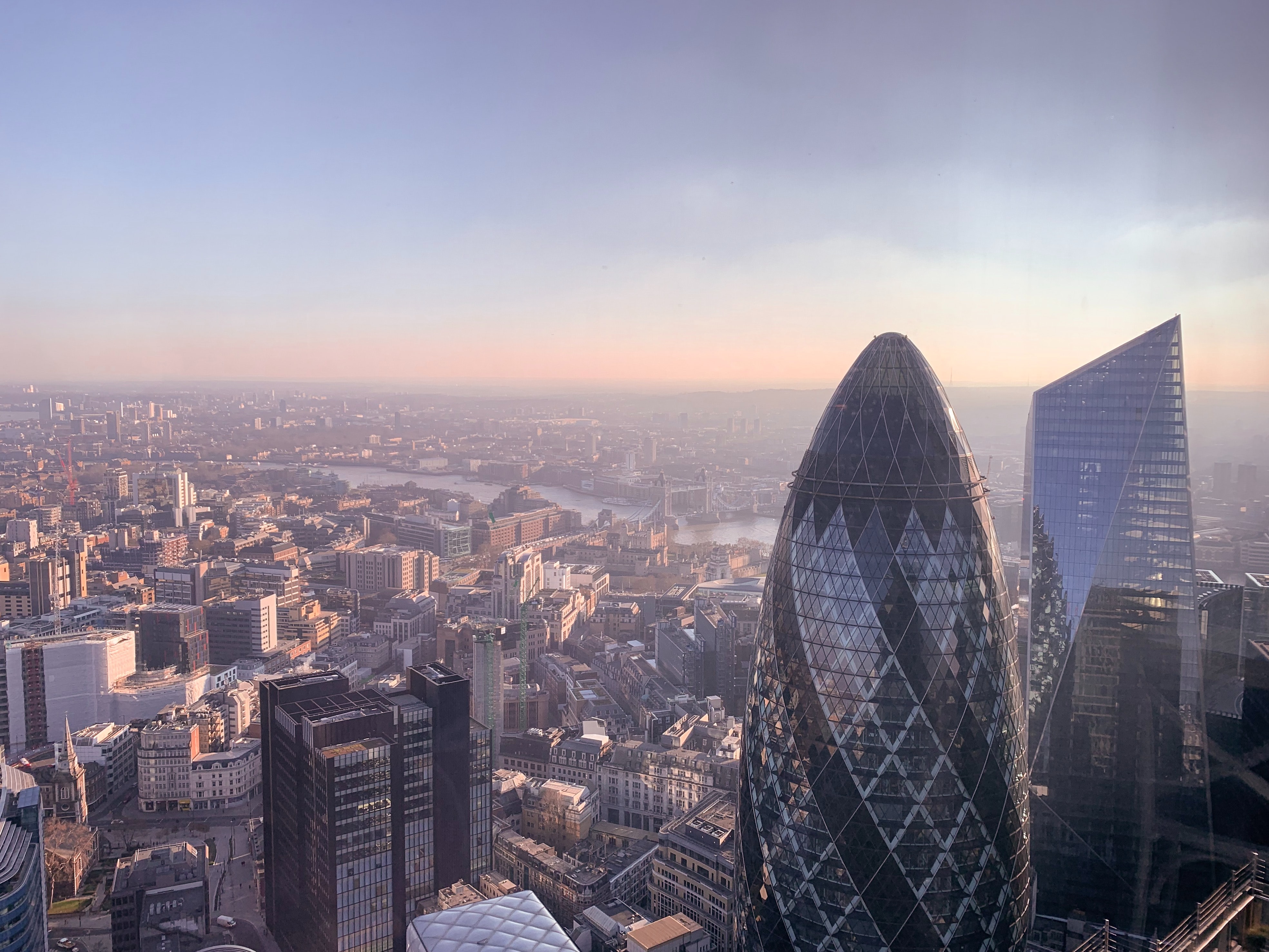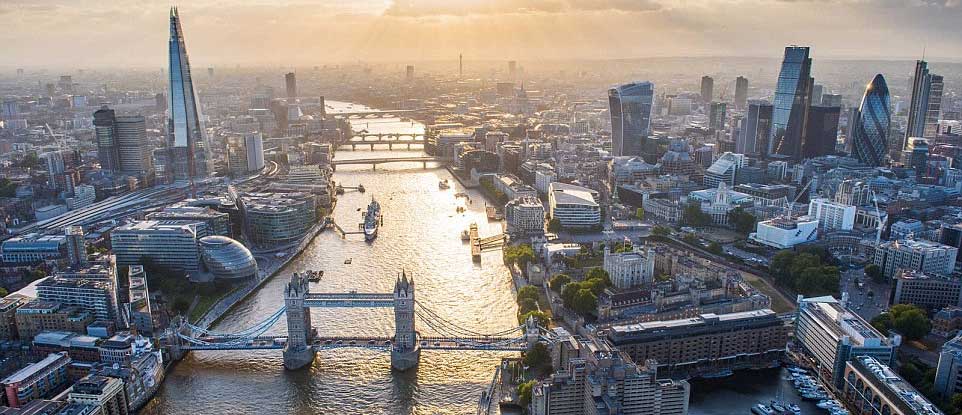The LSE London Debates have raised, amongst many other things, the question of what future the Mayor, the GLA and the Boroughs should be planning for: including who will ‘need’ London and who won’t, in business terms. I look here particularly at the City, but similar issues and analysis apply to the West End and to Inner and Outer London.
The City and its exceptional opportunities for Face-to-Face interaction (F2F) had long seemed immune to drastic change – but there’s a lot of doubt about, these days. The slow-burn effects of Brexit… the bite from ever-greater digital options and especially Artificial Intelligence (AI)… the move to remote office space and Working From Home (WFH)….. the Covid pandemic seemed at its peak (2020-21) to be the final nail, with the City threatened by an unprecedented combination of threats and impacts.
A contrast with the 80s?
Yet in one sense, we’ve been here before. The City has a spectacular case-study of the Face-to-Face / digital / remote-working relationship, in its own history. If we look back to 35 years ago, we see another traumatic moment: in 1986 the Big Bang’s deregulation of trading in stocks and shares allowed dealing from screens instead of face-to-face. This was an extraordinary potential threat, for a tight-packed City whose very raison d’être now seemed under threat. Here was an area which, for over a century, had been the uncontested heart of British capitalism. The Bank of England’s 1724 move to Threadneedle Street had started to consolidate the financial centre of the City, which depended on face-to-face contact and easy circulation within the relatively small area centred on the Royal Exchange. From the 1840s on, hundreds of small firms sought space as near as possible to the Exchange and the Bank. The electric telegraph encouraged an enormous turnover in bills, stocks and shares, but they were mostly still traded Face-to-Face, and by the 1890s the City was the undisputed financial capital of the world.
And then came the Big Bang. One might perhaps have expected the same sort of apocalyptic forecasts as we’ve been seeing over the last couple of years, induced by Covid. But in fact the response was quite the opposite: physically, floorspace demand surged. Combined with an inward rush of foreign banks, deregulation resulted in what the Pevsner architectural history describes as “a surge in demand for wide, unobstructed dealing floors…”
Economically, and in people terms, the effects were similarly dramatic, and sustained: the City’s share of Greater London financial services jobs was 40% in 1991; it’s now around 50%, according to GLA figures. That finance-jobs total rose by about 12% between 1991 and 2015; within a City jobs total where non-finance employment was growing even more strongly, to nearly 500,000.
So: after Covid, after Brexit: what changes are under way?
 Written with Jonathan Reades of UCL, our 2021 book throws some light on the way that City might react to the very dramatic changes and threats of the last few years. In “Why Face-to-Face Still Matters: the Persistent Power of Cities in the Post-Pandemic Era” (Bristol University Press) we explored the economics and dynamics behind the way the great World Cities will respond to their current challenges.
Written with Jonathan Reades of UCL, our 2021 book throws some light on the way that City might react to the very dramatic changes and threats of the last few years. In “Why Face-to-Face Still Matters: the Persistent Power of Cities in the Post-Pandemic Era” (Bristol University Press) we explored the economics and dynamics behind the way the great World Cities will respond to their current challenges.
We carried out interviews both before and after Covid hit. In the City we spoke to people in reinsurance, banking, equity trading, market supervision, venture capital, real estate and management consultancy (we also interviewed a Love Island producer, but she doesn’t work in EC3)….
F2F in opaque markets
Our interviewees stressed the vital importance of Face-to-Face contact, and a Central London location where F2F is easy and convenient, in these ‘opaque’ high-end markets – and they told us about what was missing during the lockdowns, and why it mattered.
The message: City businesses and city workers are hovering, permanently, on an ever-moving boundary: between what has to be done in-situ, often face-to-face, and what can now be digitised, remote, offshored. Our interviews showed how in all sorts of ways these boundaries are continually shifting: recruitment patterns, for example, are now very different from only a decade ago, with both job-seekers and employers far more comfortable with using on-line platforms to both formally and informally make the next move. And ‘face-to-face’ means different things now anyway, when ‘bar chat’ and ‘e-chat’ can be interchangeable for a whole range of gossip and influencing.
New Tech, and the long run
But the long-run picture, from both our background analysis, and the interviews themselves, is not one that supports the ‘dramatic swing’ thesis. Yes, Brexit, AI, and the pandemic all mean impacts, and serious one. Change will have been accelerated by COVID and lockdowns: as the chairman of Next said recently “History has been given a shove and, having moved forward, seems unlikely to reverse”. But they don’t cause it. They are doing what ‘new tech’ has been doing for 200 years, since coal and steam and capital launched the first Industrial Revolution in the Midlands and North. Similarly, with AI: artificial intelligence is penetrating further and deeper into white-collar activity. Like that first revolution, it is shaking up job patterns, along with how and where business is done. But no innovation in technology has yet reduced the total number of jobs, even while it has been laying waste to individual sectors. Law, banking, insurance are just three sectors that will all look very different in 10 years’ time, but wherever they need high-level contact, judgement and personal relationships, they won’t be relying on AI.
This is not to say that ‘London can take it’ in a sort of historical-mystical way. I’m old enough to have worked in London when decline was long-established and looked like it might be irreversible. But it is to say: let’s look at why businesses still pay some of the world’s highest rents, and understand why they still feel they need to be here.
So what IS on the horizon?
This more or less constant process of review means that in insurance, banking, law and publishing, large chunks of the business (and so employment, and need for space) are not only already carried out in cheaper locations, but also offer yet more parts that could be exported from central city cores. Same for in other sectors, with bigger average firm size, and where some competitors have already moved out: consultancies in management, HR/placement and property advice. Where meetings are not really needed all that often, and where a lot of the business is fairly routine and replicable, then another wave of ‘back-officing’, outsourcing and offshoring may well follow.
But that’s still constrained by the need to get and keep teams together. Beyond a certain point a firm can’t decide to keep just its high-added-value, high-F2F-interaction people in the city centre and banish the rest from London to Maidenhead: the nature of their business means teamwork and co-location. And if the last thirty years is any guide, out-movers will be replaced by new growth, probably in non-financial sectors.
Office to Residential?
The WFH push has, too, seen quite a few commentators foreseeing big shifts out of office to residential use. Property Industry Eye’s Marc Da Silva reported (28 April 2021) that “A number of vacant offices in the City of London will be converted into homes in a bid to revive the area following the Covid crisis, it has been revealed.”
The situation is actually a bit less exciting: when the City Corporation consulted on its City Plan 2036, it envisaged a fairly modest 2500 new homes: mostly squeezed onto its own land; with a ‘flexible’ approach, encouraging the switch in use where it doesn’t undermine the commercial role, but no loss of ‘viable’ office space. According to Catherine McGuinness, then policy chair at the Corporation: “Firms have told us that they remain committed to retaining a central London hub, but how they operate will inevitably change to reflect post-pandemic trends, such as hybrid and flexible working.”
A full-strength test
This looks about right. As the dust settles, we stick by the conclusion in Chapter 8 of our ‘F2F’ book: “The pandemic ran a full-strength test of what an’ e-only’ work world could be like. Our conclusion is that the experience will cement and accelerate certain tendencies that already existed, but will not create fundamentally new ones… So, we don’t mean that COVID-19 will have no effect on how businesses organize themselves and their employees. But it won’t do away with the need for F2F or cities either. And, so, we’d push back very strongly against the idea the pandemic means that London and New York are going to lose their lustre and fall into permanent decline overnight.” It’s not the end of cities, and not the end of The City either.
As befits an LSE graduate, I can only urge: “more research is needed.”






This is an excellent article. From personal experience in the utilities sector his observations are spot-on. Profound structural change impacted these types of organisations with smaller customers no longer needing to visit local high street branches to pay their bills. Tens of thousands of clerical and technical administrative roles disappeared as newer computing systems helped to automate so much of the laborious work such employees did. So much is now Cloud based.
BT Group is a prime example, where the company has followed a series of policies over the last ten years, to bring more of its remote working staff to be mainly located in office sites that form areas of specialised excellence. No longer are such team members with complementary skills strewn far and wide in the UK. Creativity and insider knowledge benefits from F2F. That’s why this organisation make these changes prior to the Pandemic.
Now we are seeing other sectors such as pharma and consumer healthcare actively establishing new laboratories within city businesses districts such as GSK moving to the edge of London’s West End, with others in its sector moving to new accessible sites In Canary Wharf.
Working from home(WFH), can have its advantages if one occasionally needs more peace and quiet. In particular, WFH is ideal for those experiencing a phase where they are more involved in caring responsibilities, whether young children or those in poor health.
We should not give up on F2F, its so vital for organisational cohesion and our wellbeing. The Pandemic has offered organisations that were less flexible in their work approaches to embrace a wider range of spatially distributed options, that better align with the possibilities that good structural change can generate within our economies.
As planners we need to better ensure that our workplaces, have the supporting infrastructure, such as more frequent and less crowded public transport systems, orbital as well as traditionally radial, so that we reduce commuting fatigue. Of course that includes other forms of even more sustainable movement to and from our workplaces such as cycling and walking as part of our travel mix.